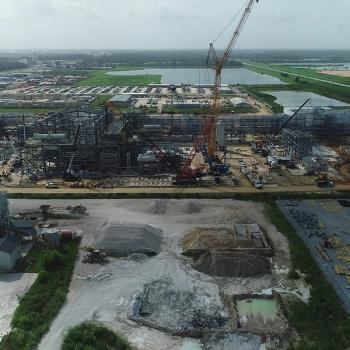
ExxonMobil, JERA to Explore US-Based Low-Carbon Hydrogen, Ammonia Project
Under the terms of a project framework agreement, JERA will seek ownership participation in ExxonMobil’s Baytown hydrogen complex and receive 500,000 tons of ammonia per year from the project.
JERA and ExxonMobil have agreed to a Project Framework Agreement (PFA) dedicated to exploring the development of a low-carbon hydrogen and ammonia production project in the United States—more specifically, at ExxonMobil’s low-carbon hydrogen production plant at the
“Cooperation among leading companies is essential to establish supply chains for ammonia, hydrogen, and other products that are key to zero-emission thermal power,” said Steven Winn, JERA’s Senior Managing Executive Officer and Chief Global Strategist. “We believe that working together with ExxonMobil, who is actively promoting investment in carbon capture and storage and hydrogen, will contribute to the transition to a global decarbonized society.”
Upon completion, the Baytown plant is expected to have an annual production capacity of approximately 900,000 tons of low-carbon hydrogen and more than 1 million tons of low-carbon ammonia. ExxonMobil slated the start of production for 2028.
“Building world-scale projects for new markets requires supply, demand and supporting regulation to all come together in sync,” said Dan Ammann, President of ExxonMobil Low Carbon Solutions. “We appreciate JERA’s leadership in helping advance the hydrogen economy and see this agreement as an important catalyst.”
According to the terms of the PFA, JERA will explore ownership participation in the project via purchase of the Baytown hydrogen production plant. The deal also considers JERA’s procurement of approximately 500,000 tons of low-carbon ammonia per year, which will be produced at the Baytown Complex and transported for demand in Japan.
JERA is currently conducting a hydrogen project of its own at an
In addition to producing low-carbon alternative fuels such as hydrogen and ammonia, ExxonMobil recently expanded its oil and gas production capacity with a floating production, storage, and offloading
“Each new project supports economic development and access to resources that will benefit Guyanese communities while also helping to meet the world’s energy demand,” said Liam Mallon, President of ExxonMobil Upstream Company. “We’re pleased to work in partnership with the Guyanese government to make reliable energy accessible and sustainable.”
Newsletter
Power your knowledge with the latest in turbine technology, engineering advances, and energy solutions—subscribe to Turbomachinery International today.




